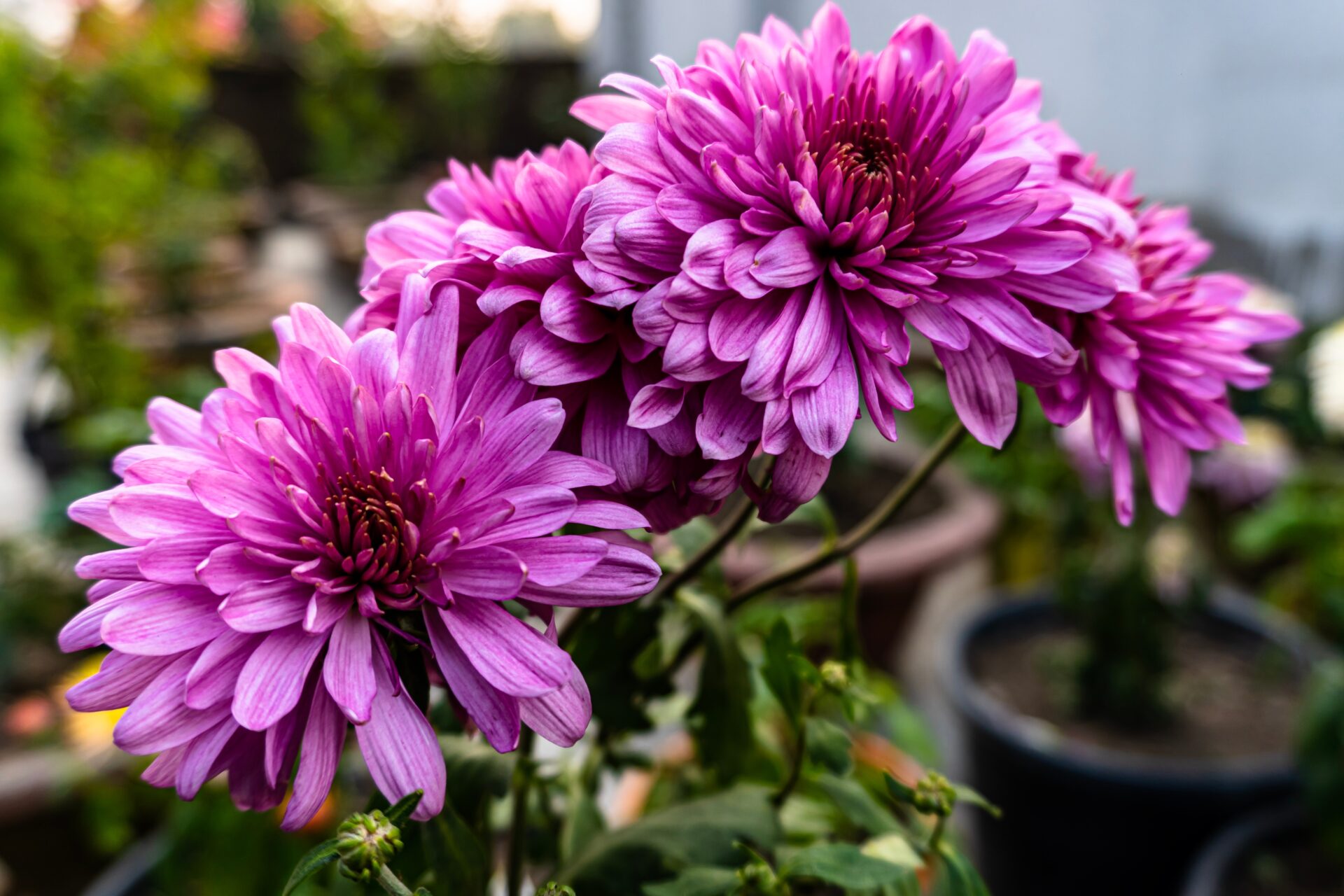1. Scientific Classification:
- Kingdom: Plantae
- Phylum: Angiosperms
- Class: Eudicots
- Order: Asterales
- Family: Asteraceae
- Genus: Chrysanthemum
2. Common Names:
- Common chrysanthemum
- Garden mum
- Mums
3. Varieties:
Chrysanthemums come in a wide variety of shapes, sizes, and colors. They can be classified into several categories, including:
- **Single-flowered**: One layer of petals around a central disc.
- **Double-flowered**: Multiple layers of petals, giving a fuller appearance.
- **Anemone-flowered**: A central disc surrounded by larger, flat petals.
- **Spider or Spoon-shaped**: Long, thin, and tubular petals.
- **Pompon**: Small, globular, and densely packed petals.
- **Cushion**: Fully double flowers with a cushion-like appearance.
4. Cultivation:
Chrysanthemums are relatively easy to grow and are commonly cultivated in gardens and as potted plants. They require well-drained soil and full sunlight for optimal growth. They are typically planted in the spring and require regular watering. To encourage bushy growth and more flowers, pinching back the stems when they are about 6 inches tall is often recommended.
5. Bloom Time:
Chrysanthemums are known for their late-season blooms, typically flowering in the fall. However, some varieties can bloom earlier in the summer. The exact blooming period can vary depending on the species and cultivar.
6. Symbolism and Cultural Significance:
Chrysanthemums hold cultural significance in several countries, including Japan and China. In Japan, they are associated with the Imperial Family and the Emperor, and they symbolize longevity and happiness. In China, they are a symbol of autumn and are highly regarded.
7. Uses:
- **Ornamental**: Chrysanthemums are primarily grown for their aesthetic appeal. They are commonly used in gardens, floral arrangements, and as cut flowers.
- **Medicinal**: In traditional Chinese medicine, chrysanthemum flowers have been used to make herbal teas believed to have various health benefits.
- **Insect Repellent**: Some varieties of chrysanthemums contain natural insect-repelling chemicals called pyrethrins, which are used in insecticides and repellents.
8. Cultivars:
There are thousands of chrysanthemum cultivars, each with its own unique characteristics. Some popular cultivars include 'Spider Chrysanthemum,' 'Anemone Chrysanthemum,' and 'Cushion Chrysanthemum.'
9. Pests and Diseases:
Chrysanthemums can be susceptible to aphids, spider mites, and various fungal diseases. Proper care and maintenance, including regular inspection and appropriate pest control measures, can help keep these issues in check.
Chrysanthemums are versatile and attractive plants that can add vibrant colors to gardens and floral arrangements. Their rich cultural history and symbolism make them even more fascinating to gardeners and enthusiasts worldwide.







super bro
ReplyDelete